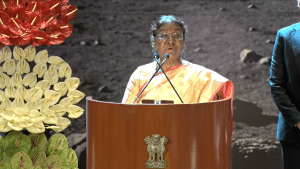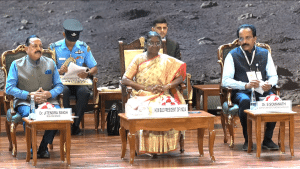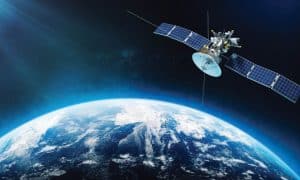It was a busy week for the US space industry last week. Especially Friday, September 9.
At the National Space Council Meeting held on Friday, Vice President Kamala Harris called on council member agencies to submit in the next six months their proposals for the authorization and supervision of commercial “novel” space activities.
Earlier in August, Harris had highlighted the need for updating the existing regulatory environment — which she had called from the “last century” — to attract investors for ensure “US leadership” in space.
Harris also briefed the meeting that the US government was planning to introduce a resolution in the UN calling on more nations to join its pledge for moratorium on direct-ascent anti-satellite (ASAT) tests.
The United States had announced a self-imposed ban on ASAT tests in April this year, which has found wide-ranging support from several nations, including Canada and New Zealand who have formally announced their intention to join the moratorium.
The Friday meeting also saw the US Department of Commerce (DOC) and the Department of Defense (DOD) announcing that they have signed an agreement to cooperate on space situational awareness (SSA), space traffic management (STM), and coordination for civil and commercial entities.
The agreement defines how the two departments will work to implement the National Space Council’s Space Policy Directive 3 (SPD-3), which seeks to advance SSA and STM work and improve SSA data interoperability to enable greater SSA data sharing.
“Establishing and maintaining coordinated SSA and STM technology, data, and services for civil and commercial entities is the foundation of the Department of Commerce’s efforts to ensure the continued safe and sustainable growth of the commercial space industry,” said Under Secretary of Commerce for Oceans and Atmosphere Rick Spinrad.
Meanwhile, in a draft report and order released a day earlier, the Federal Communications Commission (FCC) said it was planning to cut the post-mission disposal time from the currently recommended 25 years to five years.
Acknowledging that the growing challenge of orbital debris poses a significant risk to US space ambitions, the commission noted that there are more than 4,800 satellites currently operating in orbit as of 2021 end, and there are many more to come.
The current recommendation for satellite operators in LEO is that they need to ensure their spacecraft re-enters Earth’s atmosphere within 25 years following the completion of their mission.
The FCC plans to shorten the timeframe for satellite post-mission disposal to five years. It is also of the view that it be mandated for US-licensed satellites and systems, as well as non-US-licensed ones seeking access to the US market.
More from the space council meeting
At Friday’s space council meeting, Harris also announced a new coalition of space companies that will work on increasing the skilled workforce capacity in face of the rising demand in the space industry.
The coalition will be led by Blue Origin, Boeing, Lockheed Martin, and Northrop Grumman, while other industry partners will include Amazon, Jacobs, L3Harris, Planet Labs PBC, Rocket Lab, Sierra Space, Space X and Virgin Orbit. They will also be joined by the Florida Space Coast Consortium Apprenticeship Program and its sponsors, SpaceTEC, Airbus OneWeb Satellites, Vaya Space, and Morf3D.
The meeting also saw NASA Administrator Bill Nelson releasing the first concept of the Earth Information Center. The center will provide a whole “Earth view down to local information” to visualize the changing planet, enabling decision makers to mitigate, adapt, and respond to climate change.
“Just like we use mission control to monitor operations during spaceflight, we’re embarking on this effort to monitor conditions here on our home planet, and it will be available to everyone in an easy-to-access format,” Nelson said.
Work on the Earth Information Center is underway. The initial phase involves an interactive visual display of imagery and data from NASA and other government agencies, which will be expanded in person and virtual access over the next five years.
Commercial space mishaps
The super busy Friday also saw the Federal Aviation Administration and the National Transportation Safety Board (NTSB) announcing a new agreement for cooperation in the event of commercial space mishap investigations.
Under the new agreement, NTSB will be the lead investitive agency for FAA permitted, licensed or otherwise FAA approved commercial space launch or re-entry mishaps resulting in fatality or serious injury or damage to property from debris. FAA will lead all other commercial spaceflight investigations.
“For over three decades, the NTSB has led and supported major commercial space mishap investigations that have made human spaceflight safer to this day,” National Transportation Safety Board Chair Jennifer Homendy said in a statement. “This agreement is proof that the federal government can keep pace with the exciting advances taking place in the private sector while also prioritizing safety as we enter a new space age.”
“This agreement reflects our shared goal to ensure a safe, robust and vibrant U.S. commercial space industry. This will help us ensure that safety lessons learned move into the operation as quickly and seamlessly as possible,” said FAA Acting Administrator Billy Nolen.
Disclaimer: Views Expressed are Author's Own. Geospatial World May or May Not Endorse it









